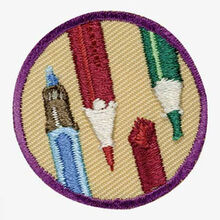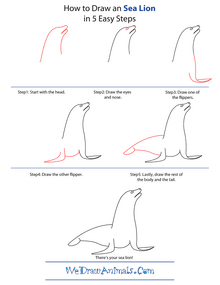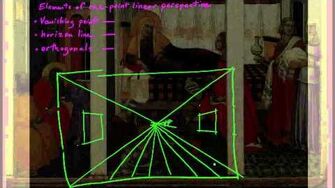Junior Drawing Badge Requirements Pdf

The Drawing badge is part of the "Legacy" badge set introduced in 2011.
Activity #1: Experiment with different materials [ ]
What you use to draw can have a major effect on how your picture looks – and you might find you enjoy some materials more than others! Find your favorite drawing tool – called a "medium" – by sketching the same still life three times, with a different medium each time. (A still life is an object that doesn't move, like a bowl of fruit or a vase.)
CHOOSE ONE:
Try black and white. Draw your still life three times: with black pen, black colored pencil, and charcoal or regular pencil.
OR
Use color. Draw your still life three times: with colored pens colored pencils, and crayons or pastels.
OR
Mix and match. Draw your still life three times with any combination you'd like. (Make each one different.) You might mix in chalk or outline color with black for a new look.
MORE to EXPLORE [ ]
Try your favorite medium on three kinds of paper. Try regular paper, glossy paper, and even a paper bag or paper plate. Was one easier to draw on that others? Did it change the look of your drawing?
Did you know that you can get different widths and shadings with crayon and chalks? It all depends on how you use them.
-Girl Scout Handbook,1953
We think of trees as green. They are green, but almost every shade of green is represented in these largest members of the plant kingdom. Not even two evergreens are exactly the same shade of green.
-Girl Scout Handbook,1940
Activity #2: Learn how to add shading [ ]
Shading is a major part of drawing. Think of a face – depending on the light, a person will have some areas on their face that are darker than others. Showing the dark areas is shading. It adds depth and makes the picture look more real. Try shading using one of the techniques below.
CHOOSE ONE:
Draw a picture of something that is mostly one color. Try a snowy field or building in a city at night. They look like one color, but nature uses different shades to give things depth and set them apart. You can, too! You can blend different colors to show light and dark.
OR
Use hatching and cross hatching to shade a face drawing. Hatching is drawing lines close together to make the picture look dark. In cross-hatching, you make a grid with the lines. Where do you need to show more shadow? Does hatching or crosshatching make the face look more real?
OR
Use smudging to make shadows in a landscape drawing. Draw a picture of an outside scene. Darken the shadow areas, and, then, use your finger or a piece of paper and smudge the shadows. What happens after smudging? Do you like the look?
Tip: When shading, start light – you can always go back and make it darker.
MORE to EXPLORE: Pretend you're a Junior from 1977.Make one of the drawings above in charcoal or pencil. Then show how to "fix" the drawing so that it will not smear. Girls did this to earn their Drawing and Painting badge.
Look up Zentangles on the web. Pinterest, in particular, has links to lot of tutorials showing how to add shading to your designs:
- Using cross-hatching for shading
Activity #3: Get some perspective [ ]

Steps on how to draw a sea lion

How One-Point Linear Perspective Works
From Khan Academy
Perspective means that some objects in a picture look farther away than others. For example, if you draw a big house at the bottom of the paper and a tiny dog at the top, the dog will look like it's behind the house, in the distance. Try using perspective in one of these activities.
CHOOSE ONE:
Draw an outdoor scene. First, draw a horizon line across your page. Then, imagine you're standing right in front of the picture. Make the objects close to you look biggest, and draw objects smaller as they get closer to the horizon. (Look at photos of landscapes for an idea of how this works!)
OR
Zoon in on an object.For example, if you want to draw a landscape scene, pretend you are looking through a camera and pressed zoom. What would you see? Draw that.
OR
Take a bug's-eye view. How would an object or scene look if you were a bug? Fill your paper, since a bug would see everything as super huge.
MORE to EXPLORE
Take a make-believe balloon ride. In your imagination, fly over two or these areas or other places of your own choosing, far from your home: a village set high in the mountains; a ship near a coral reef; a desert town near oil wells; a forest hideaway; a river plantation in a jungle. Draw what you would see.
Not sure how to draw in perspective? There are a lot of online tutorials to use:
- Drawing in One-Point Perspective
- How One-point Linear Perspective Works from the Khan Academy
Activity #4: Use your imagination like a graphic artist [ ]
Until now, you've drawn scenes from real life. A graphic artist's job is to communicate messages or ideas in visual form, such as creating a symbol that represents a company. Graphic artists often work on a computer. They may use a software program to design a company's catalog or make their website look nicer. Try drawing like a graphic artist!
CHOOSE ONE:
Draw a new cover for your favorite book or music album. What do the work or lyrics mean to you? How would you show that in a drawing?
OR
Draw a cartoon. Make up a cartoon character. Take a look at a newspaper or go online to find some examples, and, then, sketch the details from head to toe – including any fun clothes or extra arms and legs!
For More Fun: Don't Look at the Paper
Instead of drawing a person as your eyes see them, try drawing them as your hands 'see" them. Sketch a face but don't look at your paper – no cheating! Keep going until you think you've drawn all features, like eyes, mouth, nose, hair, and ears. Look down – how does the drawing look? It might look a little wild, but maybe you caught something special in the person's eyes or smile.
FOR MORE FUN: Draw a comic starring your character.
OR
Draw a logo. A logo is a symbol. Businesses often have them and print them on everything from cards to stationery to T-shirts. You could make a logo that shows symbols of you and your friends or a logo that represents a Take Action project you are doing in Girl Scouts.
MORE to EXPLORE
Draw digitally. Do your drawing for this step on a computer, or scan in a drawing you did by hand and add type or other fun design elements.
- Write to Fright and find your inner monster. This requirement could potentially be combined with the Scribe badge Requirement #3. "Monsterfy" your name, come up with a "scaritage" (heritage), and draw a picture of your "monsterfied" self.
Activity #5: Make your masterpiece - and show it off! [ ]
Use all your new skills to create a masterpiece. Choose your favorite materials, and use shading, perspective, and your imagination – even if you're drawing from real life. Then, take all your drawings from this badge and do one of these choices.
CHOOSE ONE:
Host an art show at a group meeting. Hang your drawings and talk about how you drew them. You could, also, have other Girl Scout sisters display their art, and invite family for a group showcase.
OR
Host an art show at home. In a museum or gallery, when a new artist shows off her work, it's called an "art opening." Have your own art opening! Make time to talk about your drawings and answer questions like a true artist.
OR
Create a special art scrapbook called a portfolio. Artists make portfolios so they can easily show their work to others and get jobs. Make your portfolio with a nice folder or flat carrying case and show it to family and friends. You can use it to store and showcase your future art as well!
AN ARTIST'S PORTFOLIO
A portfolio protects your artwork – and makes it easy to share! Artists often have portfolios to show to gallery owners or during job interviews. You can make your own in a simple folder, go online with an adult to find easy instructions for creating one with poster board, or buy an inexpensive one at a craft store.
Tips for putting together your portfolio
- Choose a variety of artwork to display
- Use pieces that are in perfect condition – nothing torn or wrinkled
- Think about the "flow" of the artwork as someone is turning the pages. You might put your two favorite pieces at the very beginning and end
- Ask an experienced artist or art teacher to help you put your portfolio together
- Share it with your family and friends to get their feedback
- For fun, you could include an "inspiration pocket" in your portfolio to hold any images that inspire you
Meeting Plans [ ]
- Girl Scout Leader 101 Blog
Additional Resources [ ]
- Zen doodling. The girls might find Zen doodling fun to try. Here's a tutorial.
Source: https://scoutshonor.fandom.com/wiki/Drawing_(Junior_badge)
0 Response to "Junior Drawing Badge Requirements Pdf"
Post a Comment